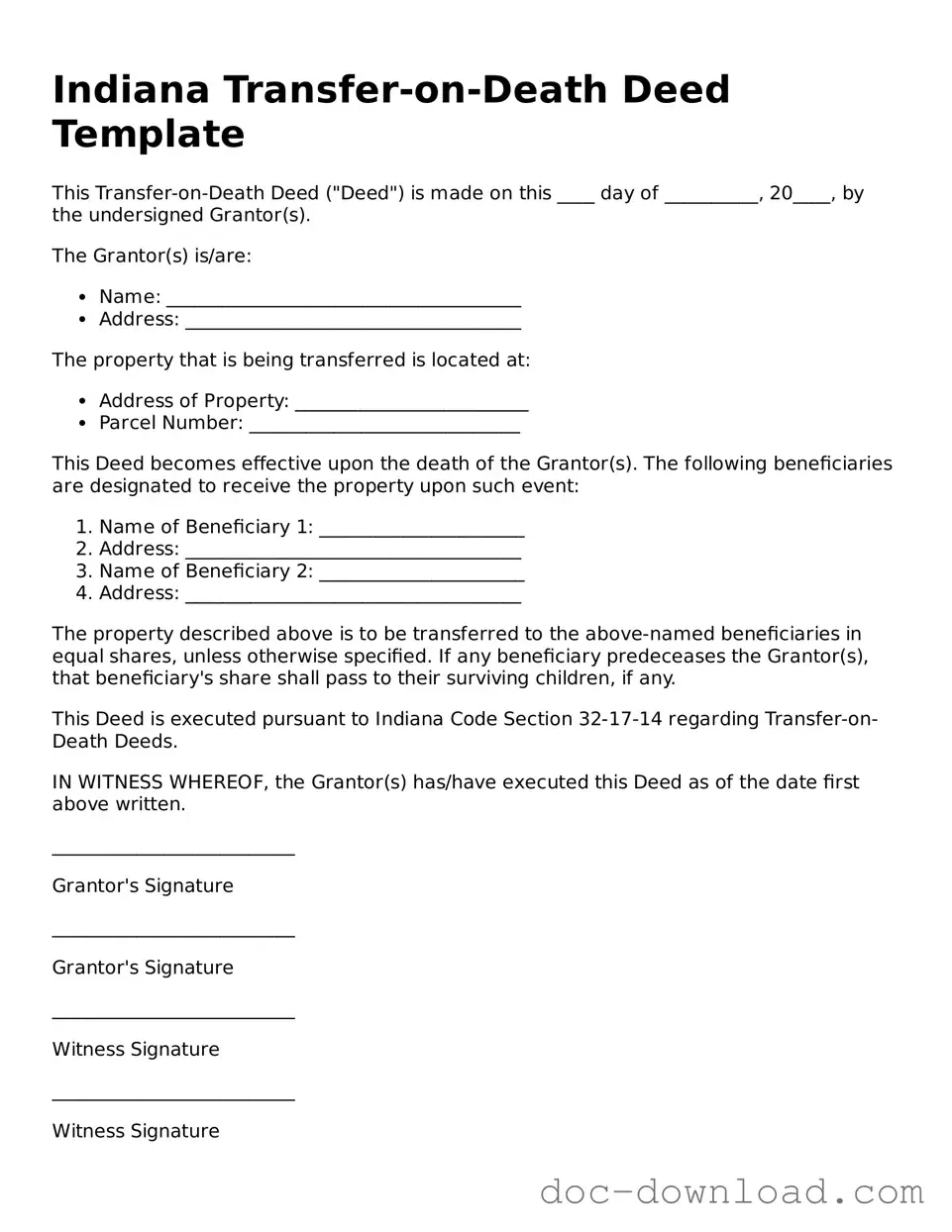The Indiana Transfer-on-Death Deed (TOD) allows property owners to designate beneficiaries who will receive their real estate upon their death, bypassing the probate process. This document is similar to a Revocable Living Trust. Both instruments provide a way to transfer assets outside of probate, ensuring a smoother transition of property to beneficiaries. A Revocable Living Trust can hold various types of assets and can be altered during the grantor's lifetime, while the TOD deed specifically pertains to real estate. This flexibility makes trusts a popular choice for comprehensive estate planning.
Understanding the various legal documents related to property transfer is essential for effective estate planning. Among these, the Georgia Durable Power of Attorney form plays a significant role, enabling one person to manage another’s affairs, particularly in financial or health matters, and it remains valid even through incapacitation. For those in Georgia looking to navigate these complexities, resources such as Georgia PDF Forms can provide valuable assistance.
Another document comparable to the TOD deed is the Beneficiary Designation form. This form is often used for financial accounts, such as bank accounts or retirement plans, allowing account holders to name beneficiaries who will inherit those assets upon their death. Like the TOD deed, this form avoids probate and ensures a direct transfer to the named individuals. However, it is limited to financial accounts rather than real estate, which is the focus of the TOD deed.
The Last Will and Testament is also similar to the Indiana Transfer-on-Death Deed. Both documents are essential in estate planning and serve to distribute assets after death. A will, however, must go through the probate process, which can be time-consuming and costly. In contrast, the TOD deed allows for immediate transfer of property without court involvement, making it a more efficient option for real estate transfers.
A Life Estate Deed shares similarities with the TOD deed as well. This document allows a property owner to transfer their property to a beneficiary while retaining the right to use the property during their lifetime. Upon the owner’s death, the property automatically transfers to the beneficiary. While both documents facilitate the transfer of property outside of probate, a Life Estate Deed grants the current owner rights until death, whereas the TOD deed transfers ownership entirely upon death.
The Joint Tenancy with Right of Survivorship is another legal arrangement akin to the TOD deed. In this setup, two or more individuals hold property together, and upon the death of one owner, the remaining owners automatically inherit the deceased's share. This method avoids probate, similar to the TOD deed. However, joint tenancy can complicate ownership rights during the lifetime of the owners, whereas the TOD deed allows for more straightforward control over the property until death.
The Transfer-on-Death Account (TOD Account) is also relevant. This financial instrument allows individuals to designate beneficiaries for their bank or investment accounts, ensuring that the funds transfer directly to the named beneficiaries upon death. Like the TOD deed, it avoids probate and provides a seamless transfer of assets. However, the TOD Account is limited to financial assets, while the TOD deed specifically addresses real estate.
Lastly, a Durable Power of Attorney can be seen as similar in that it allows individuals to designate someone to manage their financial matters, including real estate, while they are alive. This document does not directly transfer property upon death but empowers the designated agent to act on behalf of the property owner. While both the Durable Power of Attorney and the TOD deed involve the management of property, they serve different purposes and timelines within estate planning.
